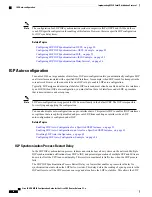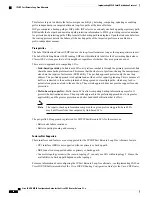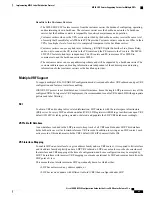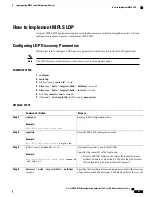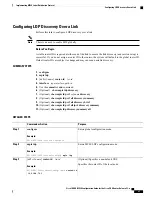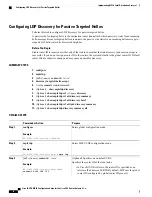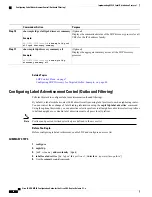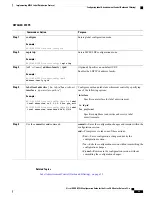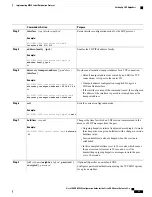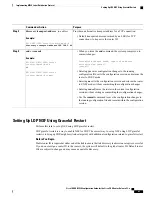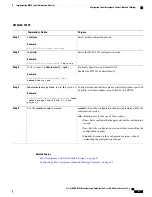
Configuring LDP Discovery for Passive Targeted Hellos
Perform this task to configure LDP discovery for passive targeted hellos.
A passive side for targeted hello is the destination router (tunnel tail), which passively waits for an incoming
hello message. Because targeted hellos are unicast, the passive side waits for an incoming hello message to
respond with hello toward its discovered neighbor.
Before You Begin
Stable router ID is required at either end of the link to ensure that the link discovery (and session setup) is
successful. If you do not assign a router ID to the routers, the system defaults to the global router ID. Default
router IDs are subject to change and may cause an unstable discovery.
SUMMARY STEPS
1.
configure
2.
mpls ldp
3.
[
vrf vrf-name
]
router-id
lsr-id
4.
discovery targeted-hello accept
5.
Use the
commit
or
end
command.
6.
(Optional)
show mpls ldp discovery
7.
(Optional)
show mpls ldp vrf vrf-name discovery
8.
(Optional)
show mpls ldp vrf all discovery summary
9.
(Optional)
show mpls ldp vrf all discovery brief
10.
(Optional)
show mpls ldp vrf all ipv4 discovery summary
11.
(Optional)
show mpls ldp discovery summary all
DETAILED STEPS
Purpose
Command or Action
Enters global configuration mode.
configure
Example:
RP/0/RP0/CPU0:router# configure
Step 1
Enters MPLS LDP configuration mode.
mpls ldp
Example:
RP/0/RP0/CPU0:router(config)#
mpls ldp
Step 2
(Optional) Specifies a non-default VRF.
[
vrf vrf-name
]
router-id
lsr-id
Step 3
Example:
RP/0/RP0/CPU0:router(config-ldp)#
router-id 192.168.70.1
Specifies the router ID of the local node.
•
In Cisco IOS XR software, the router ID is specified as an
interface IP address or LSR ID. By default, LDP uses the global
router ID (configured by global router ID process).
Cisco IOS XR MPLS Configuration Guide for the Cisco CRS Router, Release 5.1.x
32
Implementing MPLS Label Distribution Protocol
Configuring LDP Discovery for Passive Targeted Hellos

